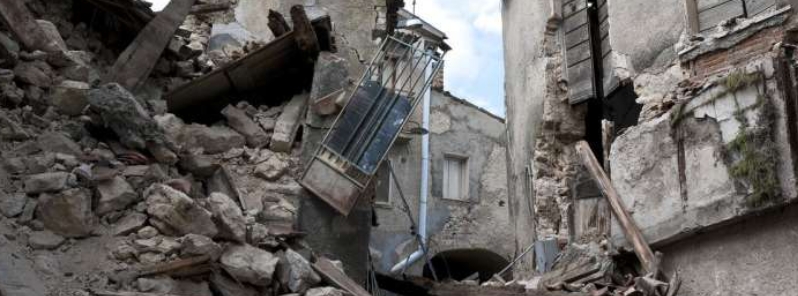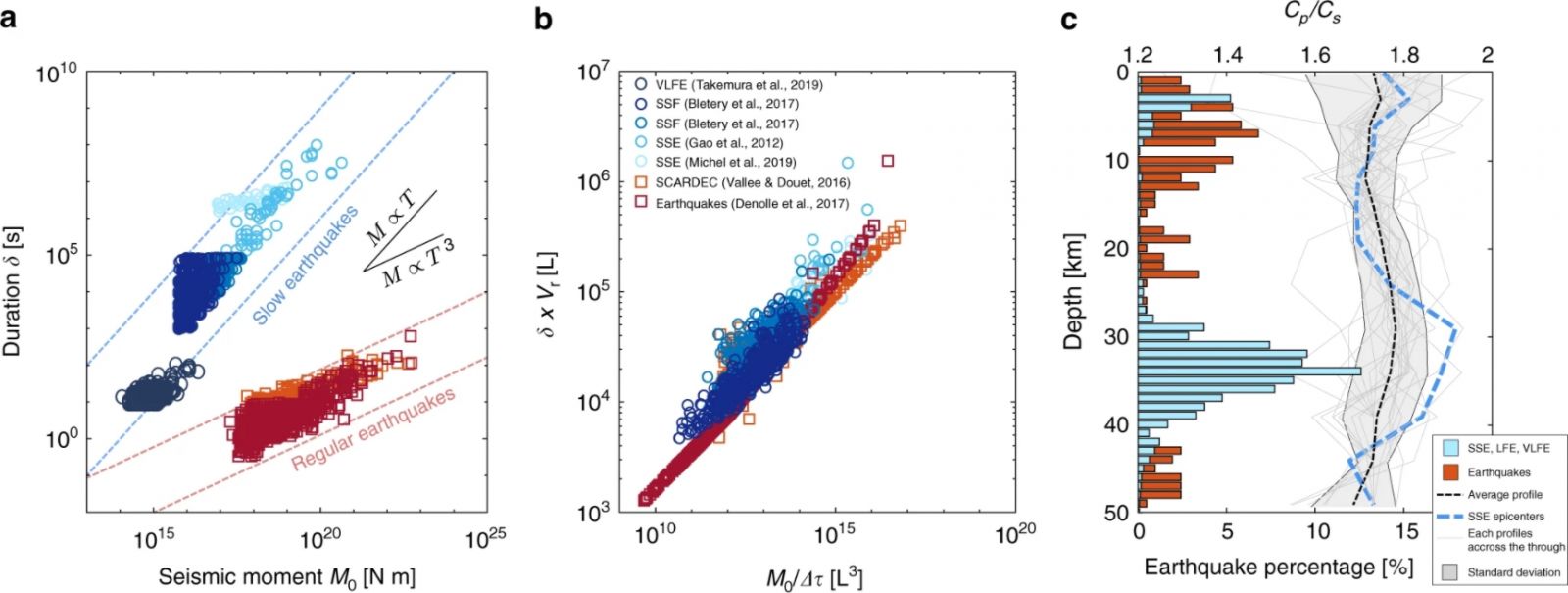New insights show factors that trigger earthquakes

A new study by François Xavier Passelegue, a scientist at ENAC's Laboratory of Experimental Rock Mechanics (LEMR), has provided new insights into the origins of earthquakes, showing that the speed and intensity with which seismic waves cultivate after a quake depend mainly on forces taking place deep inside the rocks along a fault line.
"We know that rupture speeds can vary from a few millimeters per second to a few kilometers per second once nucleation occurs [the process by which a slip expands exponentially]. But we don't know why some ruptures propagate very slowly and others move quickly," said Passelegue.
"However, that's important to know because the faster the propagation, the quicker the energy that accumulates along the fault is released."
Passelegue developed an experimental fault with the same pressure conditions and temperature as an actual fault running 8 km (5 miles) deep. Sensors were installed along the fault to determine the factors causing slow versus fast propagation.
"There are lots of hypotheses out there– most scientists think it's related to the kind of rock. They believe that limestone and clay tend to result in slow propagation, whereas harder rocks like granite are conducive to fast propagation."
For his study, Passelegue's model uses a complex rock, similar to granite. He was able to duplicate different types of slip, and he discovered that "the difference isn't necessarily due to the properties of the surrounding rock. A single fault can demonstrate all kinds of seismic mechanisms."

Scaling relation between the different modes of slip. Image credit: Passelegue, et al.
The experiments showed that the amount of energy discharged during a slip, and the length of time over which it is emitted, depend on the initial strain exerted along the effort.
By applying forces of various magnitudes, he found that higher strains triggered quicker ruptures, while lower strains triggered slower ruptures.
"We believe that what we observed in the lab would apply under real-world conditions too," he said.
"François is one of the first scientists to measure rupture speeds in rocks under the same temperature and pressure conditions that you find out in nature," said LEMR head Marie Violay.
"He developed a way to model the mechanisms physically– something that had never been done before. And he showed that all earthquakes follow the same laws of physics."
However, Passelegue warned that his model cannot be used to identify when or where an earthquake will happen. "We can identify how much strain there needs to be to cause a rupture, but since we don't know how much a fault is 'loaded up' with energy deep underground, we can't predict the rupture speed."
"Most people think that faults that have been stable for a long time will never cause a serious earthquake. But we found that any kind of fault can trigger many different types of seismic events. That means a seemingly benign fault could suddenly rupture, resulting in a fast and dangerous wave propagation."
Reference
"Initial effective stress controls the nature of earthquakes" – Passelegue, F. X. et al. – Nature Communications – https://doi.org/10.1038/s41467-020-18937-0
Abstract
Modern geophysics highlights that the slip behavior response of faults is variable in space and time and can result in slow or fast ruptures. However, the origin of this variation of the rupture velocity in nature as well as the physics behind it is still debated. Here, we first highlight how the different types of fault slip observed in nature appear to stem from the same physical mechanism. Second, we reproduce at the scale of the laboratory the complete spectrum of rupture velocities observed in nature. Our results show that the rupture velocity can range from a few millimeters to kilometers per second, depending on the available energy at the onset of slip, in agreement with theoretical predictions. This combined set of observations bring a new explanation of the dominance of slow rupture fronts in the shallow part of the crust or in areas suspected to present large fluid pressure.
Featured image credit: CC0 Public Domain

What the good scientist is not aware of is of great importance…It has nothing to do with rock type, depth of the rupture, slow or fast slip of the fault, or weight of the plate sliding down into plate…No…It is the rate at which a rogue group of self proclaimed elite are using MICROWAVE WEAPONS bounced off our upper atmosphere and beamed form like a LASER down onto one of these seismically active regions…Like FUKUSHIMA for an example…Let us propose for a moment, pure conjecture…Let us say Japan has an economic solution in place that is FREE of the DEBT ENSLAVING WORLD BANK SYSTEM, and the system in place in Japan was actually producing not just a debt free society but a successful one at that, one that would CHALLENGE the WORLD BANKING DEBT solution, then this rogue group could AIM their MICROWAVE LASER WEAPON at just about anywhere in Japan since the island was formed directly over a seismically active fault area, so they pick out one of the countries largest NUCLEAR FACILITIES, Fukushima, and fire away with the MICROWAVE LASER weapon, and VOILA, you have a RECORD sized earthquake and a NUCLEAR DISASTER of historic RECORD proportions…See the scientist did NOT take these factors into account in his testing model…I would be interested in knowing what the results would be in his experiment if he knew of these actual REAL LIFE factors that are attacking and destroying the entire earth as we knew it…I know, I know…that makes me sound CRAZY and CONSPIRATORIAL….and it is not POLITICALLY CORRECT to say such MADNESS to the sleeping masses…sorry….bad form…..
Exactly. Well said.